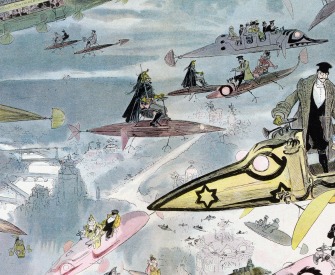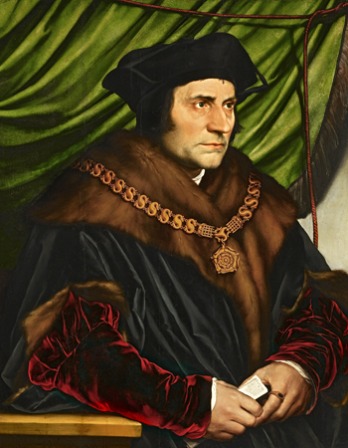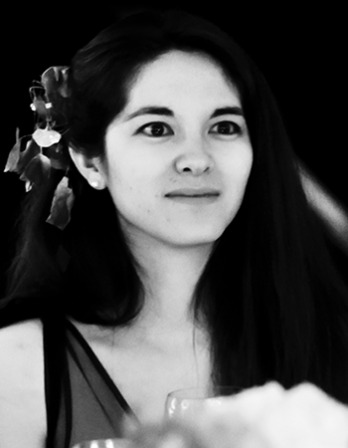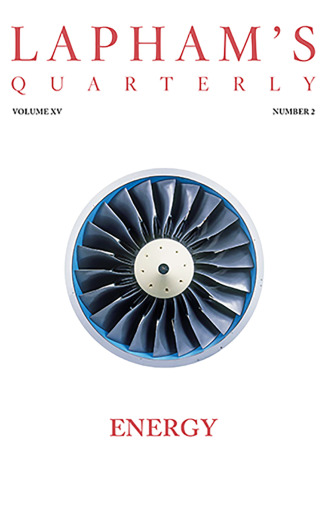God is a complex of ideas formed by the tribe, the nation, and humanity, which awake and organize social feelings and aim to link the individual to society and to bridle the zoological individualism.
—Maxim Gorky, 1913
View of the Church of Sloten in the Winter, by Jan Abrahamsz. Beerstraten, 1640–66. Rijksmuseum.
In the late 1790s, the poet François-René de Chateaubriand languished in his London exile. He had journeyed to America at the beginning of the decade in hopes that the New World sun would burn off the lingering clouds of his morose childhood in the dank and gloomy family castle in Brittany but had returned to Europe, summoned by the call to arms against the French revolutionaries. After suffering a wound, he retreated to England. As he recalled in his Memoirs, in the summer of 1798 he had just dodged an engagement with one Charlotte Ives that would have “buried” him “in an English county,” leading the life of a “hunting gentleman,” when a letter from his sister Julie interrupted his navel-gazing. “My dear,” wrote Julie from Saint-Servan, “we have just lost the best of mothers: I grieve to inform you of this fatal blow. When you cease to be the object of our solicitude, we shall have ceased to live. If you knew how many tears your errors had caused our venerable mother to shed, how deplorable they appear to all who think and profess not only piety but reason—if you knew this, perhaps it would help to open your eyes, to induce you to give up writing.”
Chateaubriand’s “error” was his first published book, a lengthy essay voicing the combative hostility toward organized religion that had become stock-in-trade for French advocates of enlightenment in the twilight years of the eighteenth century. Cast into despair by this account of the torment he had caused his dying mother, written by a sister who herself had died by the time it reached him, Chateaubriand went back to navel-gazing with a vengeance. He underwent a conversion. “I became a Christian. I did not yield, I admit, to any mighty supernatural illumination. My conviction came out of my heart. I wept and I believed.” Instead of yielding to Julie’s plea to cease writing, he resolved to expiate his sin by composing another work, a religious one. The poet’s most famous book, The Genius of Christianity, appeared fortuitously just days after Napoleon mended relations with Pope Pius VII in 1802. Perhaps because he was all too familiar with the withering power of skepticism, Chateaubriand did not deign to meet the critics of religion on their chosen battlefield by arguing rationally for the doctrinal truth of Catholicism. Instead he tried to bring the rationalists to tears. He poured his literary gifts into sumptuous descriptions of the power and beauty of ritual and the sensual and emotional satisfactions of faith. Madame Fortunée Hamelin expressed a common response to Chateaubriand’s book when she exclaimed, “What, this is Christianity? But it is delicious!”
What a contrast to Sigmund Freud’s depiction of religion as the universal obsessional neurosis of humanity. Religion, conceded Freud, has performed vital functions within civilization, offering us an imaginary compensation for our helplessness in the face of nature through fantasies of a controlling intelligence and an illusion of our capacity to summon that power through rituals and prayer. Above all, Freud saw religion as a mechanism of repression, channeling instinctual drives into socially acceptable forms. Chateaubriand’s lush Catholicism does not at all fit this notion of religion as the ultimate form of renunciation, but Freud’s portrayal of the austere and sublime legalism of Mosaic Judaism certainly does. Ultimately, however, Freud and Chateaubriand may not have disagreed entirely on the essence of religion. Freud was, shall we say, too Freudian not to recognize that human instincts will have their due. Renunciation only works if it actually satisfies the instincts it represses, even if the paths to satisfaction may be unexpected and devious.
If one wishes to see Freud’s identity papers marking him as a latter-day citizen of the Enlightenment, look no further than his 1927 book The Future of an Illusion. There he predicts that people will finally see the falsity of the “fairy tales” of religion. Intelligence will then triumph over the life of the instincts, and psychoanalysis will offer the key to finally releasing humanity from its mind-forged manacles. Yet it may be that the truly Freudian insight belongs to the imaginary interlocutor whom Freud creates to present the counter argument. “You emerge as an enthusiast,” charges Freud’s fictive opponent. “If you want to expel religion from our European civilization, you can only do it by means of another system of doctrines; and such a system would from the outset take over all the psychological characteristics of religion—the same sanctity, rigidity, and intolerance, the same prohibition of thought—for its own defense.”
One standard image of the nonbelieving secularist is of a hedonistic immoralist—as Fyodor Dostoevsky feared, if God is dead, everything is permitted. But to the contrary, it may be that secularism does not escape the dynamic that Freud believed is the motor of religion: the repression of instinct followed by a sublimation into other satisfactions—in other words, precisely the process that turns religion into an obsessional neurosis. Even among champions of the secular worldview, we sometimes find worries that secularism lacks magic and emotional depth, that it is a hyperrationalist creed that preserves the internal compulsions of religion without its animating beliefs or its consoling message of cosmic meaning and personal redemption. Frequently, the counsel of the secularist is to be brave, buck up, and face the world as a heroic pessimist. Defenders of religion are all too ready to claim that secularism offers at best a wizened form of experience and sensation. Such a view has us moderns living within a purely immanent world, blocked from any relation to a truly transcendent sphere. In such a world, the colors are a shade paler, the sounds a tone flatter than in a world touched by the divine. A host of religiously minded writers would warn that where our belief in the transcendent has vanished, we seek impoverished substitute sources of transport: in artistic experience, sport, love, or at the extreme, drugs. There will be many secularists, myself among them, who believe that the emotional and sensory scale is not so irretrievably tilted in favor of religious experience. And I would challenge secularists to reaffirm the depth and authenticity of their nonreligious experience. Nonetheless, it may be that the fundamental austerity of the secularist worldview helps account for religion’s obstinate refusal to go away.
That religion remains a vital force in the contemporary world seems an obvious enough observation in 2009. However, it contradicts one of the master narratives of twentieth-century thought. Psychoanalysis was just one species of a widespread conviction among twentieth-century western European and American intellectuals that in the modern world religion would steadily retreat and secular reason would triumph. Adherents of this belief could draw legitimacy from science’s evident conquest of domains formerly claimed by faith. They could point to a distinguished pedigree, including the heroes of the scientific revolution, the philosophes of the Enlightenment, and a pantheon of nineteenth-century giants, including Karl Marx, Charles Darwin, Friedrich Nietzsche, Émile Durkheim, and Max Weber. Contrary to Nietzsche’s famous declaration, God may not have been dead, but He certainly observed the dominant philosophical debates of the twentieth century from the margins. That was as true of Oxford logicians carving into received belief like a roast at High Table as it was of Parisian existentialists urging us to shoulder responsibility for a godless world. Among social scientists and historians, it became a veritable article of faith that organized religion’s presence in public life was dwindling and faith was becoming more and more a matter of private conscience. In the sweeping liberal imagination of mid-century American social science, secularization was virtually synonymous with modernization. Insofar as historians studied religion, it was almost invariably inserted into a narrative of decline. Political scientists routinely described the modern ideologies—communism and fascism, or even the liberal belief in progress—as ersatz secular religions, and that description took for granted that the real thing had left the stage of history. The theology departments of many American universities discretely evolved into religious studies, a rainbow coalition that acknowledged religion as an anthropological, historical, and social fact without compelling anyone to take oaths. Within academia, outward professions of faith, insistence on the persistent power of religion, or explicit calls for religion to play a public role seemed not just awkward infractions against scholarly politeness but also violations of the taken-for-granted normal order of modern reality.
Measured against so many trends in the intellectual history of the twentieth century, the return of religion to the halls of academe must be considered a sea change in the intellectual life of America and Europe. Religion is in. Across the spectrum of the humanities and social sciences, scholars are studying religious phenomena, and there is a new willingness to open a dialogue between philosophy and theology. This does not necessarily mean that scholars themselves have had a conversion on the road to Damascus. With the exception of evangelical universities and the occasional individual faculty member, universities remain staunchly secular zones. I would dare say that for most professional scholars, religion reclaims their attention not because faith reasserts its ancestral claim but because the secularist narrative has gotten snagged in contradictions and complexities. Among these snags must count the weakening of confidence in the oppositional terms that structured the secular worldview: irrational versus rational, faith versus knowledge, and the most basic dichotomy, religious versus secular. It is unlikely that diminishing confidence among secularist intellectuals would have occurred had it not coincided with the robust return of religion in cultures around the globe. Quite simply, the world has refused to cooperate with the expectations and divinations of the secularists.
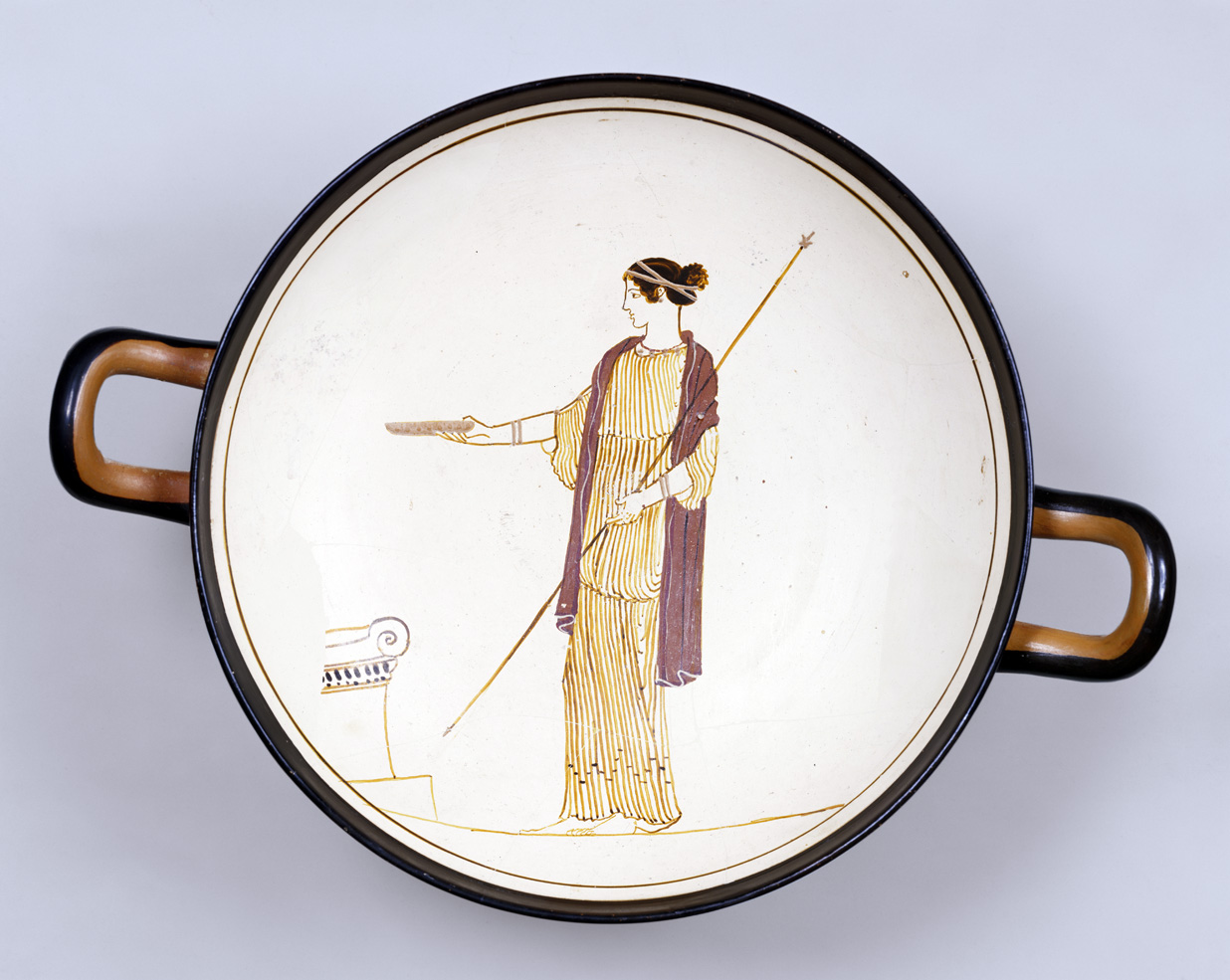
Goddess with an offering, terracotta drinking cup, attributed to the Villa Giulia painter, c. 470 BC. The Metropolitan Museum of Art, The Bothmer Purchase Fund, Fletcher Fund, and Rogers Fund, 1979.
Western Europe is more or less the only region of the world that witnesses low reported levels of individual belief. Not surprisingly, western Europeans frequently look on with dismay and incomprehension at America, where broad swaths of life never ceased to be religious. In America, secularists never denied that believers would remain, but they did expect their numbers to decline and the holdouts to settle into a private style of faith. The first assumption is obviously contradicted by the roughly 92 percent of Americans who currently profess belief in God or a universal spirit. Then, too, there are the growing numbers of Americans who describe themselves as “spiritual,” a nebulous term that could mean almost anything, and clearly an ongoing trend.
As to the second assumption, far from retreating into the private sphere, religion in America has reasserted its public role. This has been a crucial dimension of the political landscape of America since the early 1980s, when the Moral Majority burst onto the scene. In the ensuing decades, we have seen Christian fundamentalists exert an extraordinary influence on the Republican Party, while grassroots fundamentalist activists have gained power in local politics and school districts. Public education has been a particular target, because from the 1940s to the 1960s, American public schools were the objects of a vigorous secularizing effort that had prohibited religious exercises and Bible reading. Recent years have witnessed repeated efforts to roll back these measures, bring prayer back into the schools, and offset the teaching of Darwinian evolution with instruction in creationism. George W. Bush supported these campaigns in various ways, including his controversial faith-based initiatives, which allowed religious organizations to compete for government money without a strict separation between their religious activities and their social-service programs.
The reinvigoration of religion’s public role has not been the sole preserve of the Christian Right. Progressive movements have drawn heavily on religious themes, most prominently the civil-rights movement. Barack Obama’s eloquence is often leavened by biblical resonances, and his message of hope taps the veins of religious yearning and expectation that marble the bedrock of American oratory. Moreover, even though Obama has reversed some of Bush’s religiously driven policies, such as the restriction on human embryonic stem-cell research, he has continued Bush’s willingness to partner with faith-based social organizations. What separates the two administrations is Obama’s promise to refuse to endorse employment discrimination based on faith within religious organizations receiving taxpayer dollars. This in turn signals one of the most important departures of the new administration, namely Obama’s much stronger emphasis on the inclusiveness of America as a land of faith. “We know that our patchwork heritage is a strength, not a weakness,” he said in his inaugural address. “We are a nation of Christians and Muslims, Jews, and Hindus—and nonbelievers.”
Obama speaks in the tongue of America’s civil religion, and here “religion” means more than just a metaphor for love of flag and country. True to Obama’s claim, Christianity may have provided the predominant frame in this country, but it is remarkable that the American civil religion seems capable of drawing all the major faiths into its ambit. Indeed, it seems that America is a machine for generating faith—studies have found that immigrants of all faith traditions often become more, not less religious as they steep in the melting pot. That is, perhaps, not as surprising as it might sound. Alexis de Tocqueville, after all, had already described the potent link between religion and democracy in America. To this day it is difficult to overlook the paradox that in a land that prides itself on the constitutional separation of church and state, religion nonetheless provides crucial ligaments that tie many people to their civic identity. (Witness a 2006 survey that suggested that Americans consider atheists the least trusted minority in American society. In light of that, Obama’s inclusion of nonbelievers was not incidental.)
Kill a man, and you are an assassin. Kill millions of men, and you are a conqueror. Kill everyone, and you are a god.
—Jean Rostand, 1939Almost anywhere one looks across the globe, there is ample evidence of the strengthening of individual belief. That includes, most obviously, the intensification of faith throughout the Islamic world, but it would also have to include the spread of evangelical Protestantism, a worldwide phenomenon described by John Micklethwait and Adrian Wooldridge in their recent book God Is Back: How the Global Revival of Faith Is Changing the World. Yet the truly striking phenomenon is the reassertion of the public role of religion, a phenomenon that ties together the intensification of personal faith and a host of economic and geopolitical factors. Again, the most conspicuous example is Islam. Militant Islam exploded into world awareness with the Iranian Revolution in 1979. In the late 1970s, the mujahideen began to wage guerilla war against the Soviet-backed Afghan government and then against the USSR itself. That in turn prepared for the ascendancy of the Taliban theocracy in Afghanistan. So long as the parameters of the Cold War remained in place, the emergence of Islamic militancy could be and was folded into the struggle between America and the Soviet Union. Only after the collapse of the USSR did militant Islam emerge as a perceived global threat. Only then could the great ideological polarization of the Cold War be supplanted by the image of a world torn between an epochal conflict between Judeo-Christian and Islamic cultures, the so-called clash of civilizations.
Militant Islam so commanded world attention even before 9/11 that it is easy to forget the many other instances of the return of religion to public life. Examples abound. In what seems to be a vindication of Islam’s tolerant tradition, we see the peaceful growth of political Islam within Turkey, a democracy that has been aggressively secularist since its founding by Atatürk in 1923. With the collapse of Yugoslavia, religious-ethnic identities emerged with a vengeance in the Balkans in the 1990s, and here too the Muslims occupied the position of a basically tolerant and peace-seeking minority. In the overthrow of communism, Christianity frequently played a conspicuous role. This was particularly strong in Poland, where the Solidarity movement drew on Catholic social teaching, and the native-born Pope John Paul II became a moral polestar for the opponents of Communism. Then, too, there were the powerful currents of Liberation Theology that swept through Latin America during the 1970s and 1980s, currents, incidentally, that John Paul II opposed because of their openness to Marxism. In Israel, after the triumphant 1967 Six-Day War, the moderate religious political parties became more militantly messianic in their belief that settling the territories Israel had captured from Egypt, Jordan, and Syria was a fulfillment of God’s will that Israel once again reach to its biblical borders.
Surveying this global landscape of renewed public religion in 1999, Peter Berger, one of the greatest living sociologists of religion, concluded, “the assumption that we live in a secularized world is false. The world today, with some exceptions … is as furiously religious as it ever was, and in some places more so than ever.” Reading that, our brow knits in discontent, and we pause to ask, really? Just as furiously? Undoubtedly, the predictions of a Sigmund Freud have not come to pass; and the ironclad identification of modernization with the decline of religion looks more like a metaphysical belief than an accurate description of reality. Nonetheless, whatever complications secularism has encountered in both its own self-understanding and its ability to account for sociopolitical developments, it is misguided to turn the tables and portray secularism as the illusion and religion as the reality of our world.
The emergence of modern secularism over the last several hundred years has been truly epoch-making, and it has reshaped our entire world. Even in regions of the world where religious revival has taken virulent forms, fundamentalists encounter champions of secularism. Where secularists are absent, it is only because they have been imprisoned, killed, or driven out. Where religion once sealed off the limits of the thinkable, in the modern era a new epoch cracked open these closed boundaries. For unprecedented millions around the world, fundamentalist belief has become more and more one possible choice among several. The actual clash that defines our world is not between allegedly Judeo-Christian and Islamic civilizations, but between closed and open worldviews. It is not a clash between civilizations. It is a clash within them, among their members and among the possibilities existing within these specific cultures. An open worldview is capacious enough to embrace both religious belief and outright nonbelief. Here, the secularist worldview actually intersects with the examples of moderation and tolerance found in all the great faith traditions.
Yet, insofar as this is possible, it is only on the grounds prepared by secularism. For secularism emerged historically as the only mode humans have found to successfully and peacefully manage the tensions of diverse belief systems within a pluralistic framework.
To understand this point, we need for a moment to set aside our discussion of secularism as a worldview based on nonbelief and instead consider secularism from another angle, namely the institutional development of the secular sphere. And to do this, we need to recall the long history of the distinction between the religious and the secular within the Christian tradition. This is a distinction as old as Christianity itself.
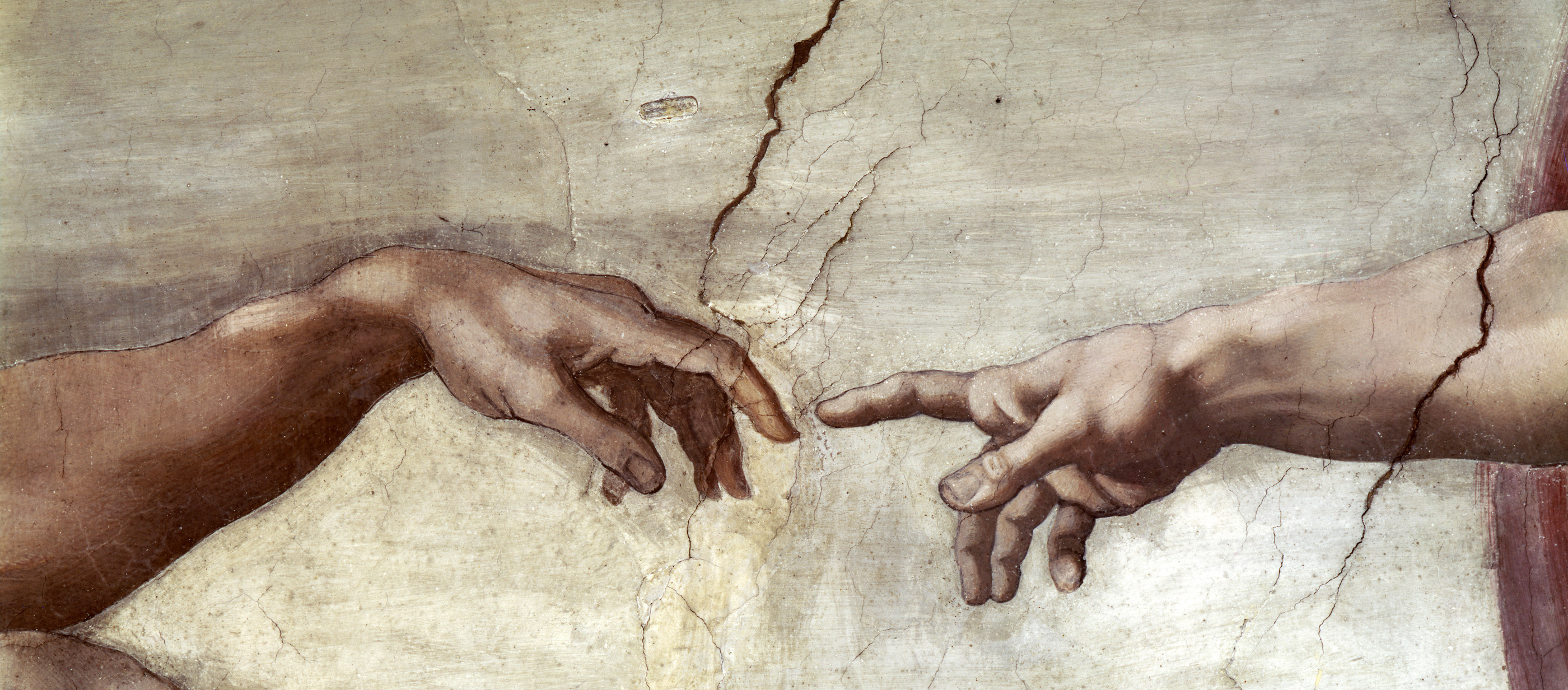
Creation of Adam (detail), Sistine Chapel Ceiling, by Michelangelo, c. 1508–1512. Vatican City, Rome, Italy.
Jesus Christ himself counseled, “Render unto Caesar the things which are Caesar’s, and unto God the things that are God’s.” St. Augustine enshrined this division as a philosophical principle when he separated the city of God from the earthly city, and drew a sharp line between the sacred history contained in the Bible and the secular history of the affairs of men. Medieval Christian thinkers distinguished between the spiritual and the temporal, medieval lawyers distinguished between ecclesiastical and temporal powers. These two powers were meant to operate together in a harmonious and complementary way, though in actuality the Middle Ages witnessed almost continual competition between the Pope and the worldly monarchs. Ironically, secularism has its origins in this Christian idea of the saeculum. Of course, the original Christian concept of the secular had nothing to do with nonbelief, but with a division of human reality into two distinct regions. Moreover, in the medieval imagination, the division between the ecclesiastical and temporal powers was unmistakably superseded by the higher power of God. Yet the seed was planted for the development of the modern idea of a secular state and society.
The modern democracies of Europe and the Americas all, in some way, preserve this division between the secular and the religious. But a funny thing happened on the way to modernity. The relationship between secularism and religiosity got reversed. Where religion and the all-encompassing reality of God defined the boundaries of the medieval secular domain, in modern democratic societies the secular envelops the religious. The secular sphere now sets the appropriate boundaries of religion within public life. Of course, it is a basic dimension of this modern arrangement that the state does not meddle in matters of private conviction, but make no mistake: it is of fundamental concern to the state that it retains the right to define the relationship between private belief and public life. Insofar as believers bring their beliefs into the public realm, they have to operate on the terms of this secular arrangement.
It is important to appreciate the magnitude of this fact. Historically, comprehensive belief systems have been, as the phrase implies, totalizing in their claims to righteousness and the imperative to organize spiritual, social, and political life around their truth. By contrast, recognition of the value of pluralism and tolerance in the democratic public sphere means these “liberal” values must already have penetrated into the heart of the comprehensive doctrine itself, challenging its totalizing impulse and relativizing it in relation to competing general claims. Even those who fight for a more public role of religion within liberal democratic societies do so as secularists. This point is made forcefully whenever liberal societies encounter people whose religious doctrines have not been transformed in this way, a lesson that liberal democracies have learned anew since 9/11.
So we can define secularization as a specific pattern of transformation and differentiation in the relationship between religious and ecclesiastical institutions on the one side and secular institutional spheres such as the state, economy, science, art, entertainment, health, and welfare on the other side. To describe secularization in this fashion does not obligate us to identify it with the decline of religion, but rather with a way of organizing the social and political life of a specific community. Moreover, it opens the possibility for a more nuanced understanding of the relationship between secularism and religion in different cultures. After all, the division between the secular and the religious may have originated in Latin Christendom, but it has spread across the globe, exported first in the age of European expansionism and then later as an ideal of liberal democracy. And as it has taken root in new settings, the differentiation between secular and religious spheres has taken on local color, depending on the specifics of the religious tradition and the social dynamics at play. Instead of presenting us with an image of insurmountable clashes between civilizations or irreconcilable conflicts between belief and nonbelief, this view suggests a world filled with various concrete examples of complicated negotiations between different spheres of human life and belief.
Of course, these negotiations are not always easy, as we see when anti-abortionists disregard the civil law and picket clinics or even murder doctors in the name of protecting life. And we must acknowledge those cases where the negotiations have become severely imperiled, as in present-day Pakistan, which teeters on the brink of all-out religious civil war. Or broken down altogether as theocracy triumphs and forcibly absorbs the secular sphere back into religion, as in Taliban Afghanistan, with its marauding religious police and its brutal enforcement of Sharia law. Terrifying as these examples are, the violent rejection of secularism is the exception that proves the rule. Fundamentalism in the modern world is a reactionary formation that would be unimaginable without the presence of its enemy—and that presence conditions the reaction. Contradicting the image of a clash of civilizations, radical Islam perceives its enemy not only to be infidel Americans, but also tolerant Muslims who advocate a modern secular organization of religious life.
What is the future of secularism? As we have seen, this worldview and its belief that religion was on the decline have experienced a number of severe setbacks in recent decades. The weakening of the secularization model that incubated in western culture from at least the eighteenth-century Enlightenment through to the twentieth century is indeed a remarkable fact in the intellectual landscape of the present. Ultimately, however, the emergence of modern secularism, including outright atheism, is itself a far more extraordinary event. After all, from the earliest evidence of human symbolic activity—art, song, dance, and ritual—dating back at least fifty thousand years, there is evidence of religion: conceptions of an afterlife, of deities, and of the human desire to summon these supernatural powers. Measured against this vast stretch of time, the strictly naturalist conception of the world is a brand new creature. It may have begun to stir as long ago as three, four, five, or six hundred years—exact chronology is not the really important point. To an ear tuned to the long duration of human history, the claim that the cosmos is godless still rings with bold novelty.
The predictions of the radical secularizers may have proven overly exuberant when measured against the tenacity of belief and the complexity of the present world. And the polemics of best-selling atheist authors like Richard Dawkins and Christopher Hitchens may seem to vindicate Freud’s imaginary opponent’s warning that religion could only be replaced by another doctrine, one equally marked by sanctity, rigidity, and intolerance. Yet if the human past was fully intertwined with religion, the future is long and open. As far as the eye can see, it is a future indelibly stamped by the great turning point when nonbelief entered the world. In considering these prospects, let us transpose onto the grandest metaphysical scale Chairman Mao’s response when he was asked about the impact of the French Revolution: “Too soon to tell.”
Kill a man, and you are an assassin. Kill millions of men, and you are a conqueror. Kill everyone, and you are a god.
—Jean Rostand, 1939Secularism is undoubtedly suffering through a crisis of confidence. Perhaps, though, this presents an opportunity to reinvigorate the secularist vision. Outspoken atheists such as Hitchens and Dawkins may allow nonbelievers to do some cheerleading, but they are not likely to reenergize the radically secular worldview. After all, their arguments are familiar; they have been enumerated many times already. They are, as Freud’s fictive opponent feared, likely to breed intolerance. Better to recognize that both the history of religion and the secular story are not lacking in examples of intolerance, but neither is one or the other short on acts of charity and hospitality, right up to and including love across the borders. Besides, it is not clear that anyone stops believing because of the better argument.
The secularizers should worry less about converting believers and more about reinvigorating secularism’s own potential for deep meaning and rich experience. From at least Chateaubriand’s time, savvy defenders of the faith have known that they will not win an argument on the basis of reason alone. So they have largely ceded that ground to secularists. But in common with the Romantic Chateaubriand, defenders of faith have insisted that religion holds a lock on the power to satisfy people’s need for emotional fulfillment. Secularists have been all too willing to allow believers to monopolize the language of sublimity, ecstasy, deep meaning, mystery, and transcendence. It is time to insist on the authenticity and meaningfulness of the secularist’s transports, reveries, epiphanies, and, if you will, transcendent experiences. Secularists have allowed themselves to be portrayed as heroic pessimists, cold rationalists, immoralists, or callow hedonists. Time now to reaffirm the drama and pathos of the secularist adventure. If Chateaubriand wanted us to weep at Catholic Mass, then it is time for secularists to get dewy-eyed when, for instance, they read the resounding final words of Darwin’s Origin of Species. “There is grandeur in this view of life, with its several powers, having been originally breathed into a few forms or into one; and that, whilst this planet has gone cycling on according to the fixed law of gravity, from so simple a beginning, endless forms most beautiful and most wonderful have been, and are being, evolved.”
We should put aside the language of a clash. The reinvigoration of secularist values need not involve an attack on religion, any more than the reassertion of religion need involve an attack on nonbelief. Indeed, in a pluralist situation, secularists can worry about the order of their own house, without concerning themselves overly much with their neighbors. But this is the important point: religion and nonreligion can coexist in this way when and only when they both already stand firmly within a relationship defined by secularization. The moment that secularized relationship ceases to be the case, we would all have cause to worry, believers and nonbelievers alike.
